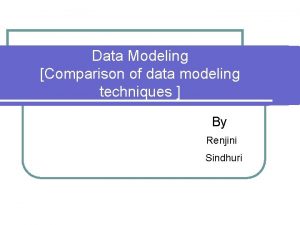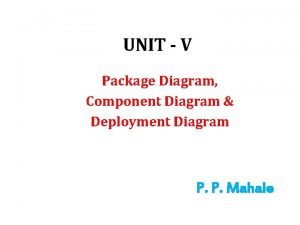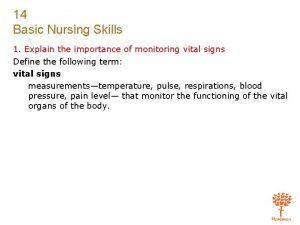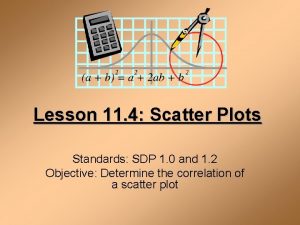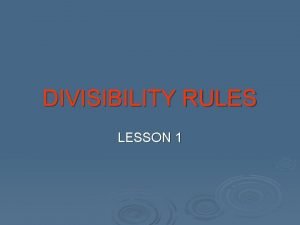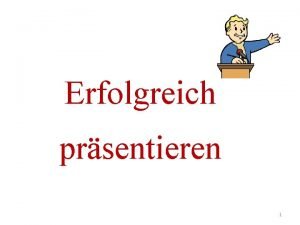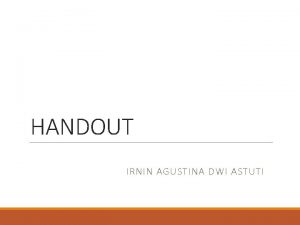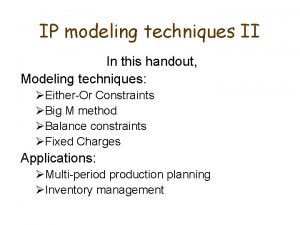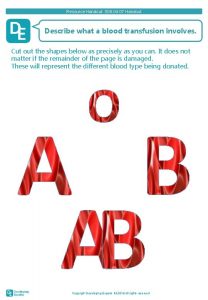IP modeling techniques I In this handout Modeling











- Slides: 11

IP modeling techniques I In this handout, Modeling techniques: ØUsing binary variables ØRestrictions on number of options ØContingent decisions ØVariables (functions) with k possible values Applications: ØFacility Location Problem ØKnapsack Problem

Example of IP: Facility Location • A company is thinking about building new facilities in LA and SF. • Relevant data: capital needed expected profit 1. factory in LA $6 M $9 M 2. factory in SF $3 M $5 M 3. warehouse in LA $5 M $6 M 4. warehouse in SF $2 M $4 M Total capital available for investment: $10 M • Question: Which facilities should be built to maximize the total profit?

Example of IP: Facility Location • Define decision variables (i = 1, 2, 3, 4): • Then the total expected benefit: 9 x 1+5 x 2+6 x 3+4 x 4 the total capital needed: 6 x 1+3 x 2+5 x 3+2 x 4 Ø Summarizing, the IP model is: max 9 x 1+5 x 2+6 x 3+4 x 4 s. t. 6 x 1+3 x 2+5 x 3+2 x 4 10 x 1, x 2, x 3, x 4 binary ( i. e. , xi {0, 1} )

Knapsack problem • • Any IP, which has only one constraint, is referred to as a knapsack problem. n items to be packed in a knapsack. The knapsack can hold up to W lb of items. Each item has weight wi lb and benefit bi. Goal: Pack the knapsack such that the total benefit is maximized.

IP model for Knapsack problem • Define decision variables (i = 1, …, n): • Then the total benefit: the total weight: Ø Summarizing, the IP model is: max s. t. xi binary (i = 1, …, n)

Connection between the problems • Note: The version of the facility location problem is a special case of the knapsack problem. Ø Important modeling skill: – Suppose we know how to model Problems A 1, …, Ap; – We need to solve Problem B; – Notice the similarities between Problems Ai and B; – Build a model for Problem B, using the model for Problem Ai as a prototype.

The Facility Location Problem: adding new requirements • Extra requirement: build at most one of the two warehouses. The corresponding constraint is: x 3 +x 4 1 • Extra requirement: build at least one of the two factories. The corresponding constraint is: x 1 +x 2 ≥ 1

Modeling Technique: Restrictions on the number of options • Suppose in a certain problem, n different options are considered. For i=1, …, n • Restrictions: At least p and at most q of the options can be chosen. • The corresponding constraints are:

Modeling Technique: Contingent Decisions Back to the facility location problem. • Requirement: Can’t build a warehouse unless there is a factory in the city. The corresponding constraints are: x 3 x 1 (LA) x 4 x 2 (SF) • Requirement: Can’t select option 3 unless at least one of options 1 and 2 is selected. The constraint: x 3 x 1 + x 2 • Requirement: Can’t select option 4 unless at least two of options 1, 2 and 3 are selected. The constraint: 2 x 4 x 1 + x 2 + x 3

Modeling Technique: Variables with k possible values • Suppose variable y should take one of the values d 1, d 2, …, dk. • How to achieve that in the model? • Introduce new decision variables. For i=1, …, k, • Then we need the following constraints.

Modeling Technique: Functions with k possible values • The technique of the previous slide can be extended to functions. • Suppose the linear function f(y)=a 1 y 1+…+anyn should take one of the values d 1, d 2, …, dk. • Introduce new decision variables. For i=1, …, k, • Then we need the following constraints.
 Erickson nursing theory
Erickson nursing theory Relational vs dimensional data modeling
Relational vs dimensional data modeling Idefix notation
Idefix notation Common modeling techniques of deployment diagram
Common modeling techniques of deployment diagram Chapter 14 basic nursing skills
Chapter 14 basic nursing skills Scatter plots and data student handout 4
Scatter plots and data student handout 4 Divisibility rules handout
Divisibility rules handout Lsvt loud video
Lsvt loud video Fire extinguisher training handout
Fire extinguisher training handout Lecture handout
Lecture handout Slidetodoc.com
Slidetodoc.com Ciri-ciri handout
Ciri-ciri handout


